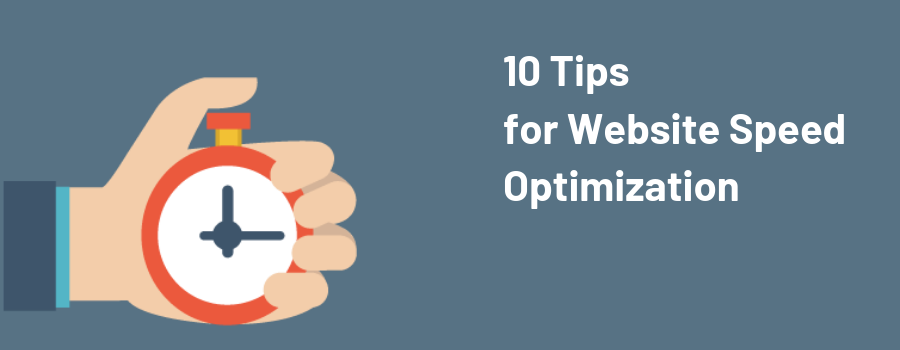Why do you need to Optimise Website Speed?
We all live in a fast paced world and people are looking for instant gratification. So when a user visits your website to learn more about your business, the user expects to have a quick and seamless experience using your website, failing to do so will force the user to leave your website in search for another.
Needless to say, the need for the high-performance website has never been higher. These websites provide results like low bounce rates, high return users, engagement, higher conversions and much more.
Top 10 Tips to Increase Website Speed
1) Use a Content Delivery Network
You can speed up your website by using a content delivery network by hosting your media files and save up to 60% of bandwidth halve the number of requests your website makes.
The way CDN works is by hosting files across various locations in the world.
So when a user from Australia visits your site, they will access and downloads files from the server which is closest to them.
By this method, the users experience minimal lag and seamless experience.
2) Clean Your Database
When using WordPress for your website, you might have noticed that one of its main downfalls is that your database gets messy very quickly which are due to deactivated plug-ins, saved drafts, etc.
There a lot of plug-in tools to clean up your database, one of them being WP-Optimize that routinely delete all of the stuff you don’t need in your database.
3) Reduce your 301 ReDirects
We all know that 301 redirects are preferred compared to 404 errors, but the 301 directs slow down the time taken for the browser to reach the correct page.
So use a tool like the Screaming frog to spot 301 directs and reduce it, for better website speed.
4) Deactivate Unused Plugins
If you are using Word press for your site and experience low Website Speed, the plug-ins are usually the main culprits for slowing it down.
If you have any unused plug-ins still being activated on WordPress, delete them to improve your website speed.
5) Broken Links
Broken links on your website can drain your bandwidth and result in decreased website speed.
It also acts as a turn off for a user visiting your website, forcing them to switch to another competitor’s optimized website.
Identify the broken links on your Website using the following free tools
- Screaming Frog
- Ahrefs
- Google Webmaster Tools
Once the broken links have been identified and fixed it improves page speed, average pages visited per user and a decrease in the bounce rate.
6) Enable Keep-Alive
HTTP Keep-Alive is a permission message sent from the user’s machine to the web server for downloading a file.
By enabling Keep-Alive, it allows the user’s machine to download multiple files without asking for permission repeatedly.
To enable Keep-Alive, simply copy and paste the code below into your .htaccess file.
<ifModule mod_headers.c>
Header set Connection keep-alive
</ifModule>
7) Compress Images
As the saying goes “A picture is worth a Thousand Words”, posting images on your website engages the user to explore more of what you have to offer.
However, the sizes of the images tend to be heavy in size and can decrease the loading speed.
If you are using WordPress, there is a plug-in called WP Smush.it which automatically compresses the images without losing any quality.
The best part of this plug-in is that it runs in the background every time you upload a new image and you can run it retrospectively for your previous uploaded images as well.
8) Make the Right Choice as per your Hosting Needs
Usually, most site owners go for the cheapest hosting option in the market while starting out. Most of the time, it is sufficient in the beginning.
However, when you get more traffic, it’s always better to upgrade for a higher plan.
In the case of Hosting, You have the following Options:
- Shared Hosting
- VPS Hosting
- Dedicated Server
Shared hosting is the cheapest options available among the three, which starts at about 350 rupees per month. Using this method you will be sharing the server’s resources like CPU, disk space and RAM with other websites registered on the same server.
Using VPS Hosting, you still share a server with other sites, but you have dedicated resources allocated to your site which are not shared.
If you want complete control and loads of space over your hosting server, the best bet is to opt of the dedicated server.
However, you would also have to do more work regarding configuration and technical setup. And this the most expensive option among the three options.
9) Caching Plug-In
One of the fastest ways to decrease your website loading time is to install a caching plug-in inside WordPress like WP Super Cache.
The plug-in is totally free and if you are looking for an easy way to improve page speed, just install the caching plug-in.
10) Gzip your Website
Use Gzip to compress your website’s files to save bandwidth increase page speed.
The process works by compressing your files into a ZIP file, this is faster for the user’s browser to load the files. The browser unzips the file and displays the full content to the user without losing any quality on displayed content.
You can enable Gzip on your website by adding the following code into your .htaccess file:
# compress text, html, javascript, css, xml:
AddOutputFilterByType DEFLATE text/plain
AddOutputFilterByType DEFLATE text/html
AddOutputFilterByType DEFLATE text/xml
AddOutputFilterByType DEFLATE text/css
AddOutputFilterByType DEFLATE application/xml
AddOutputFilterByType DEFLATE application/xhtml+xml
AddOutputFilterByType DEFLATE application/rss+xml
AddOutputFilterByType DEFLATE application/javascript
AddOutputFilterByType DEFLATE application/x-javascript
Feel free to Contact us, if you still have any Query. We would love to hear from you.

